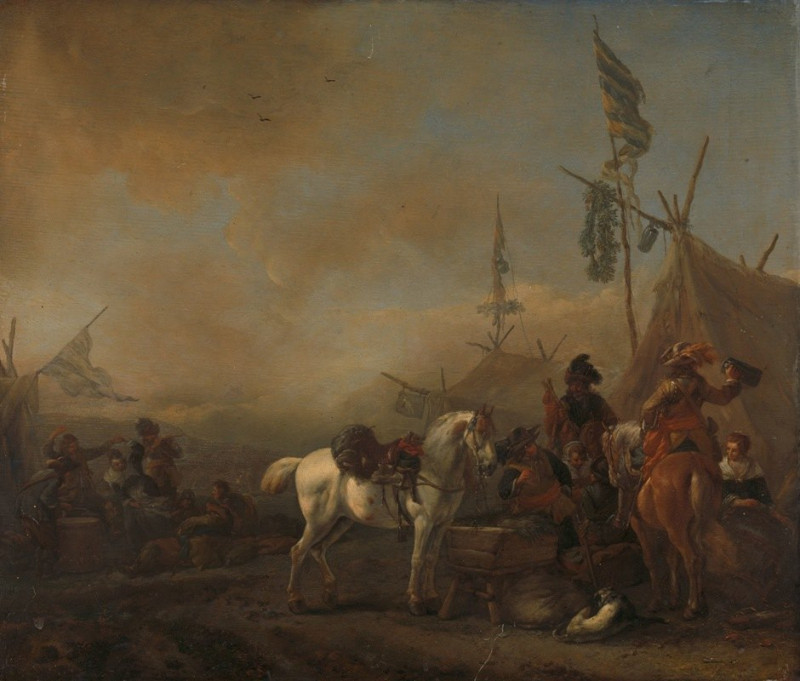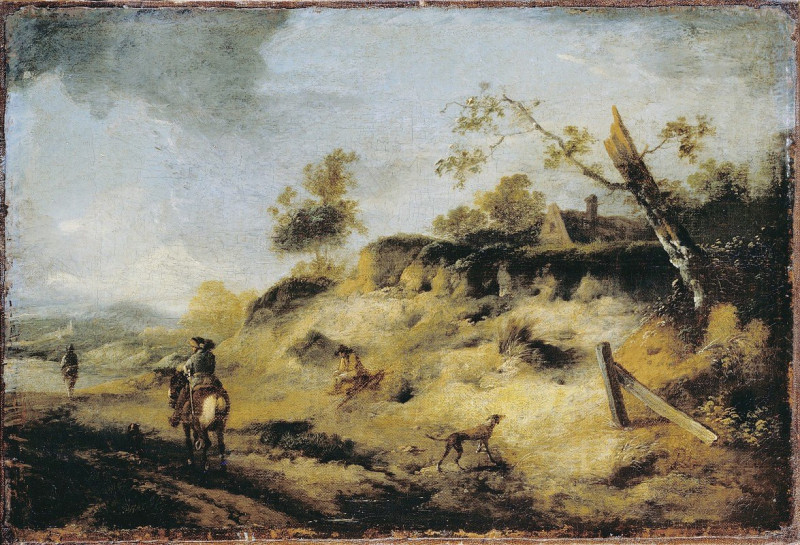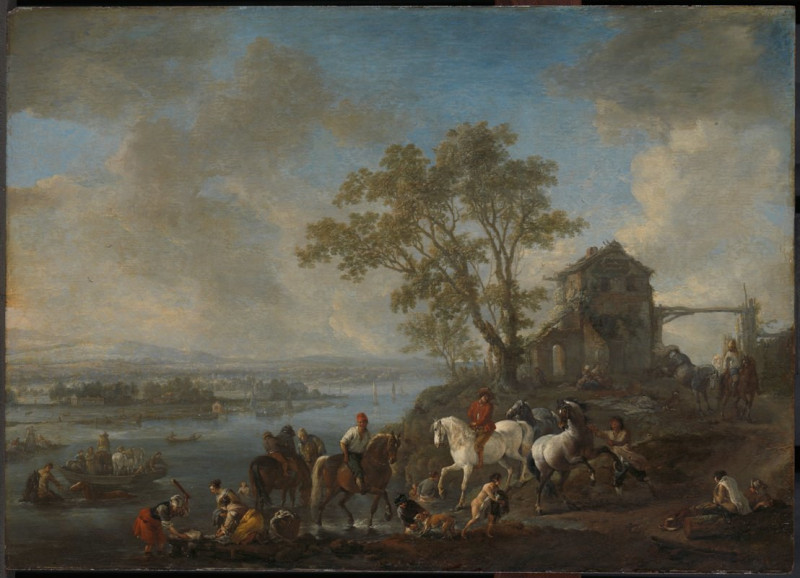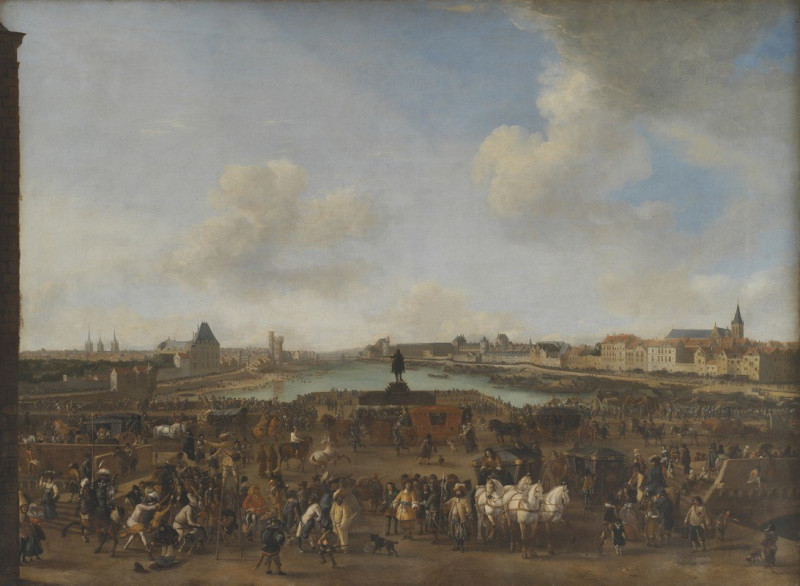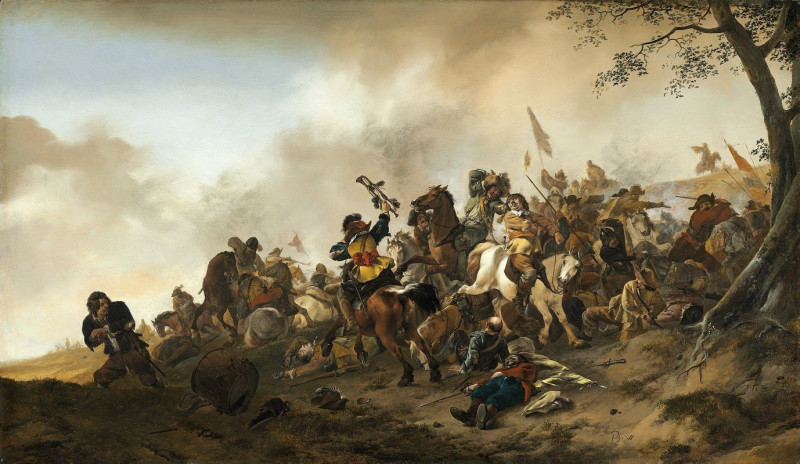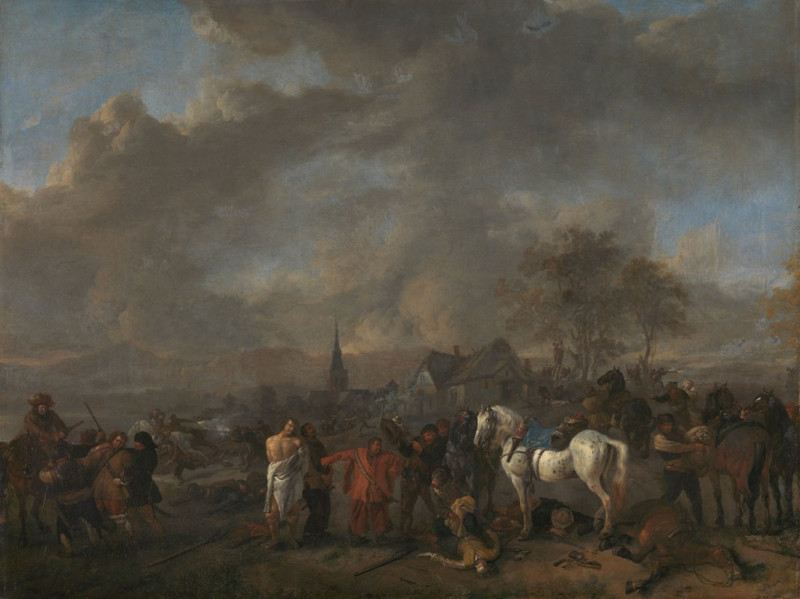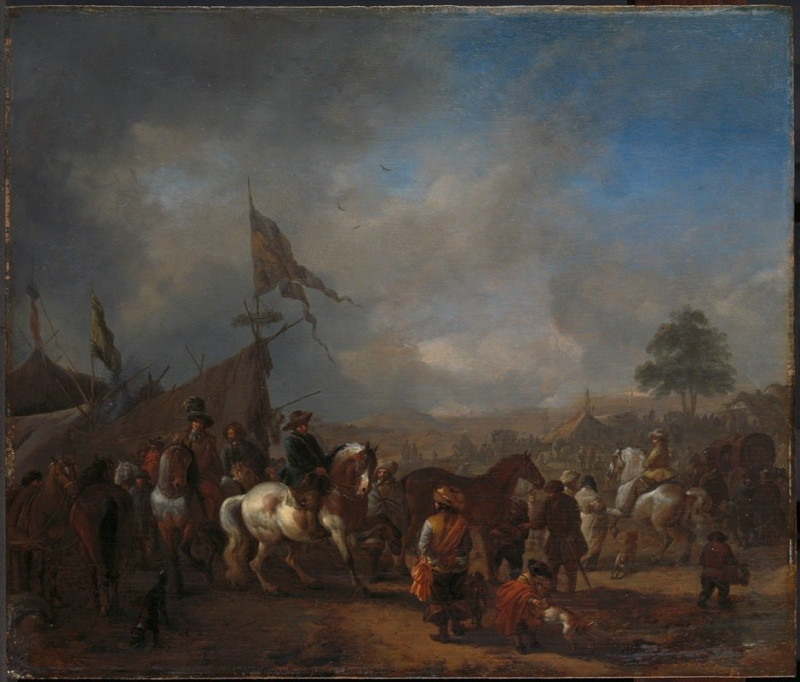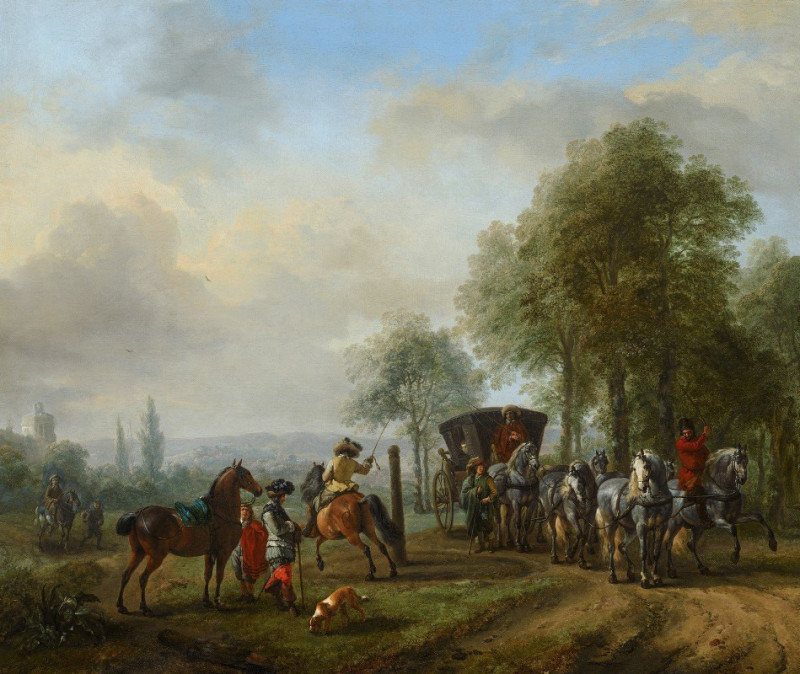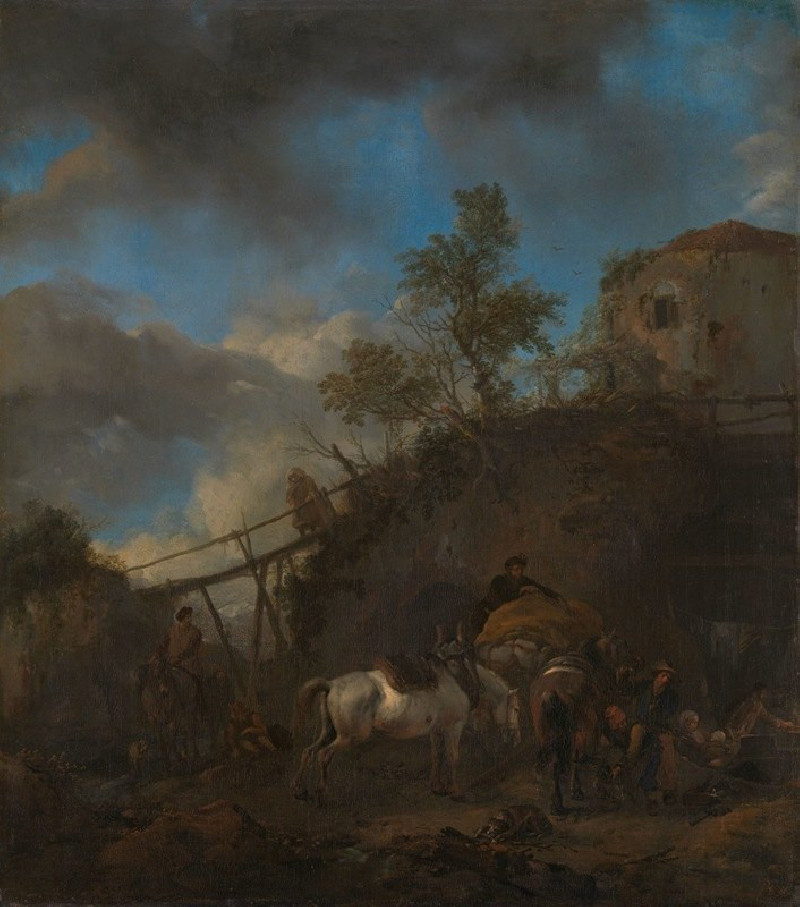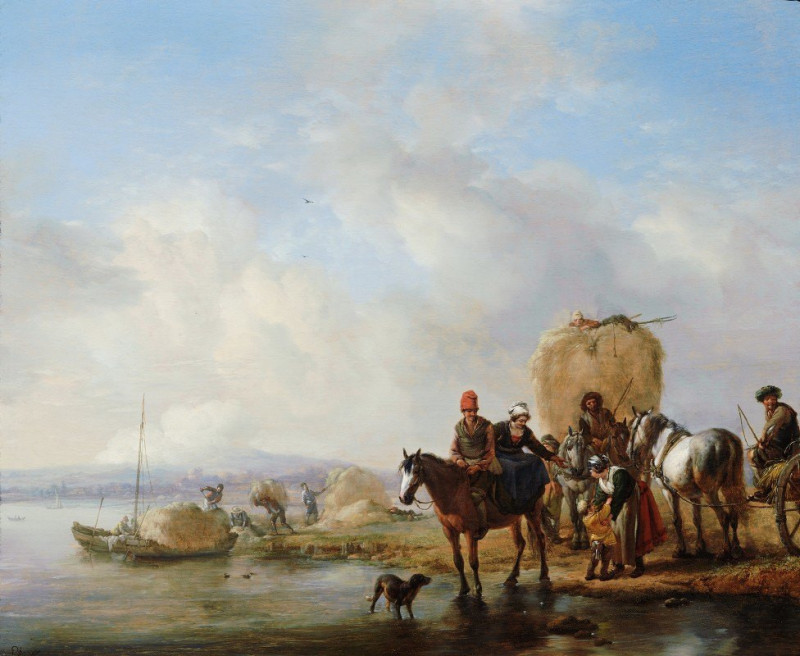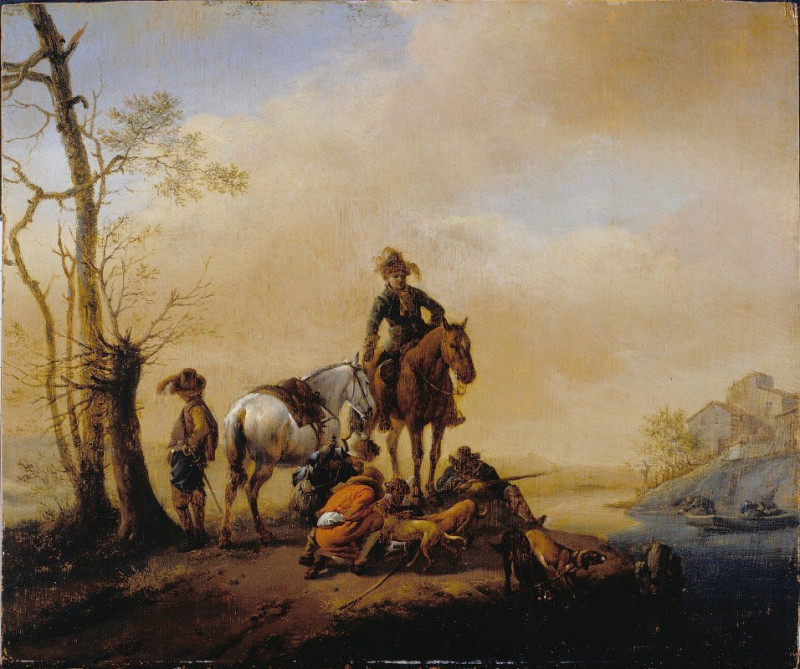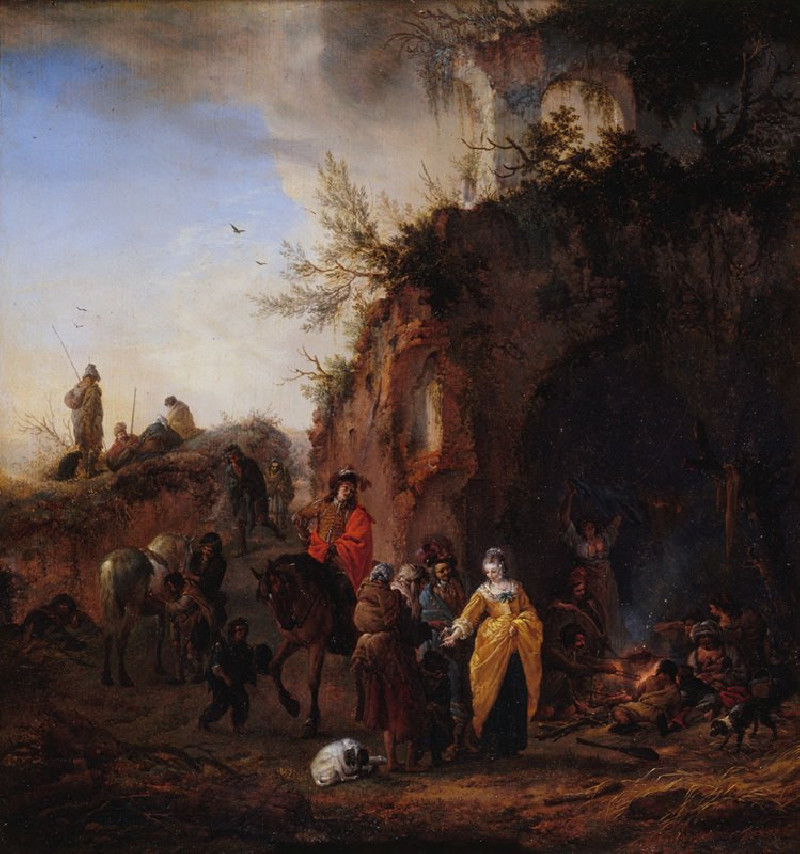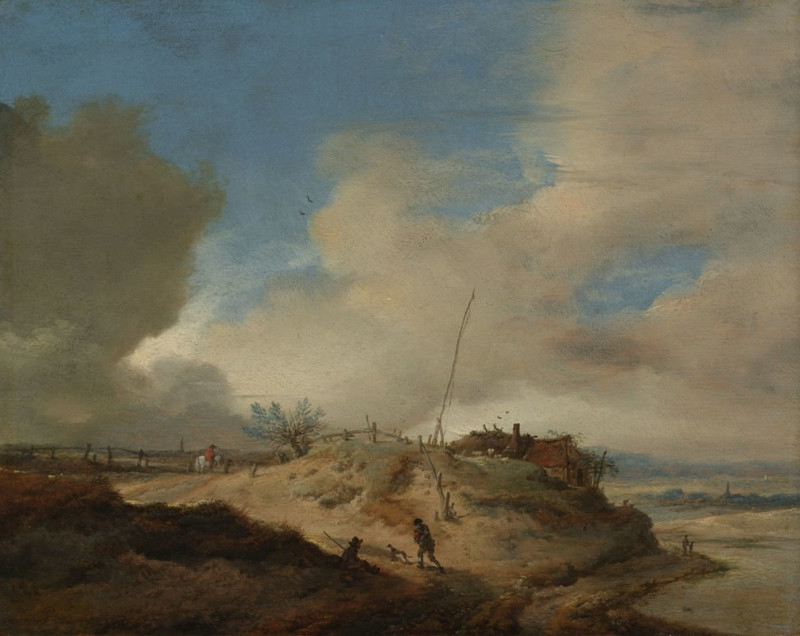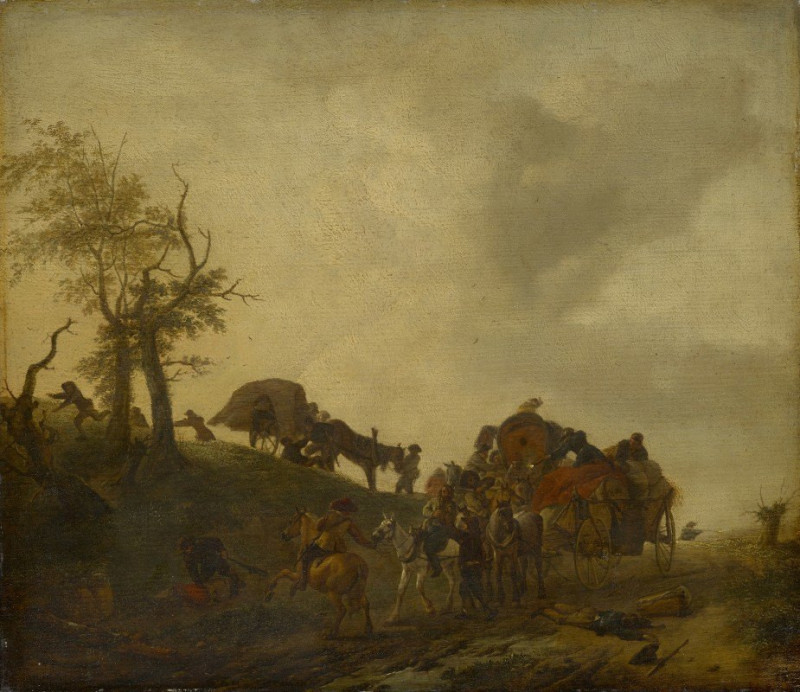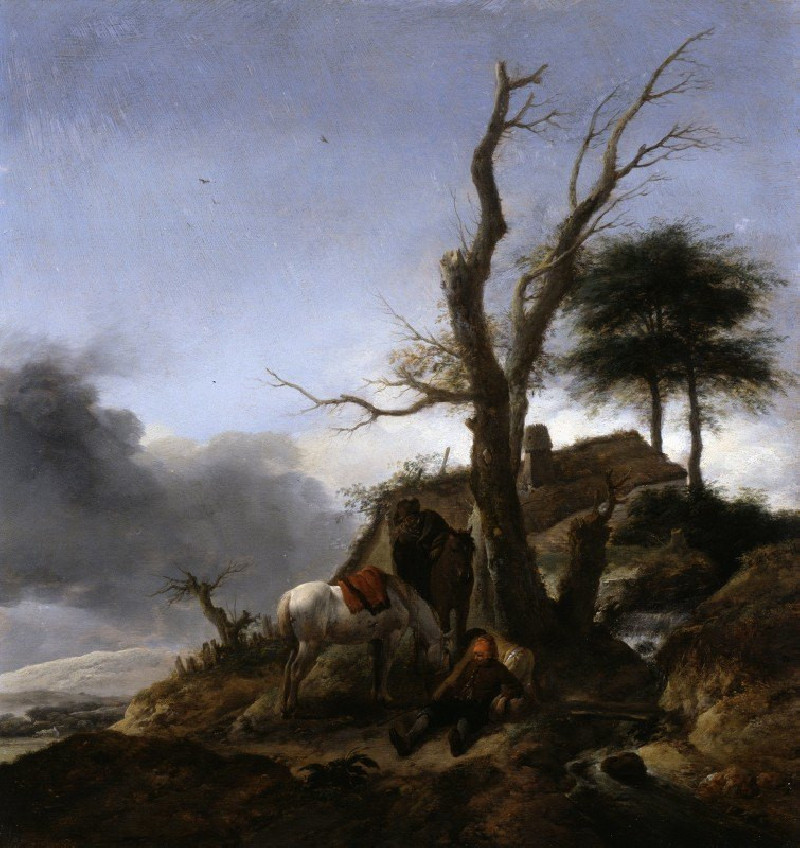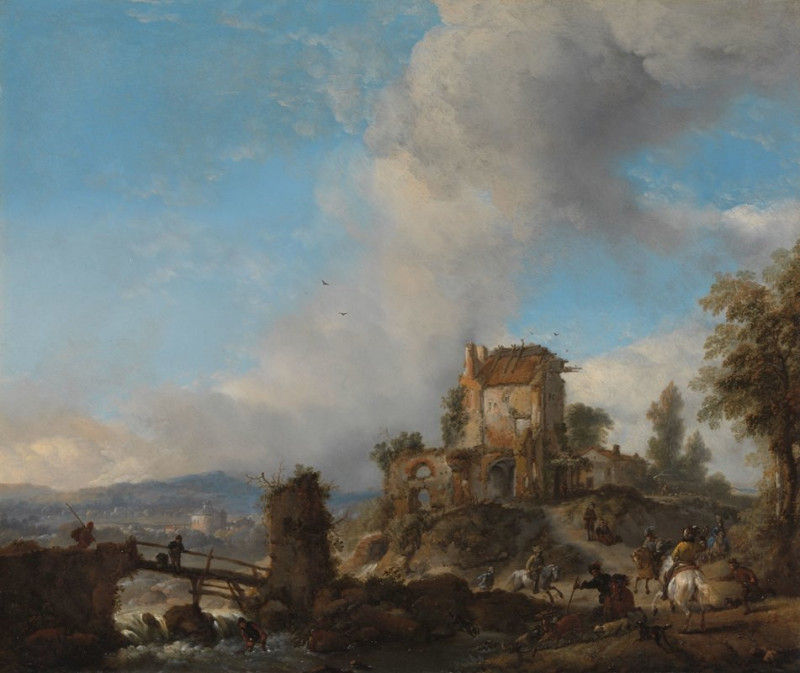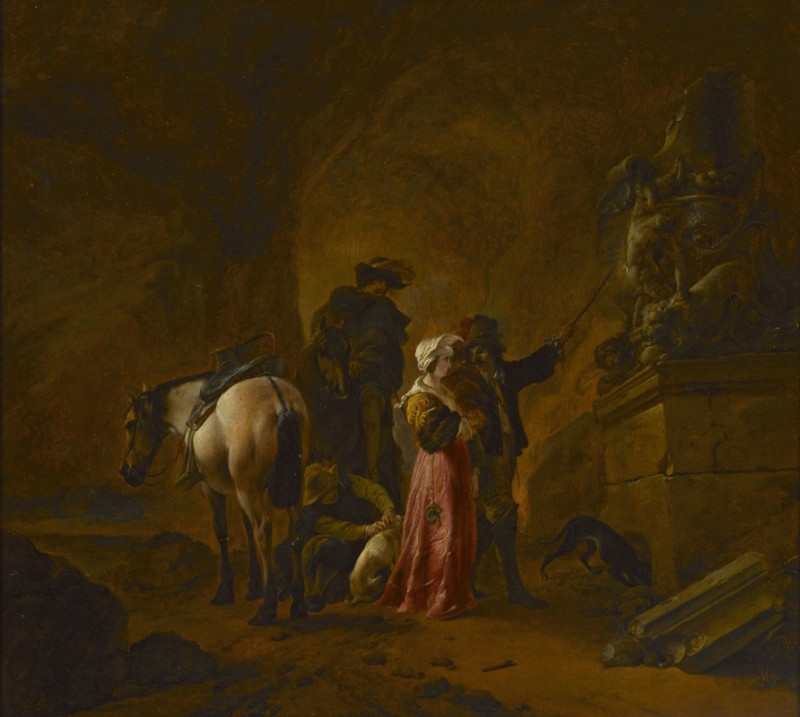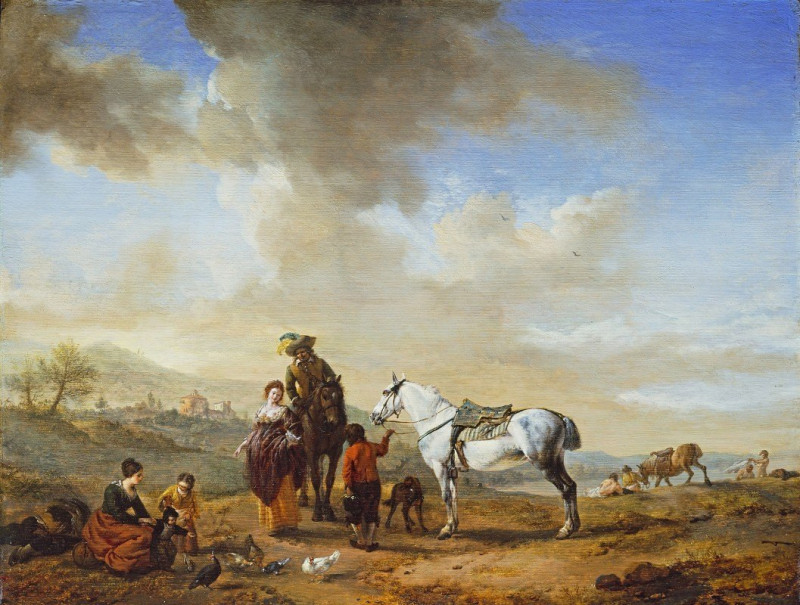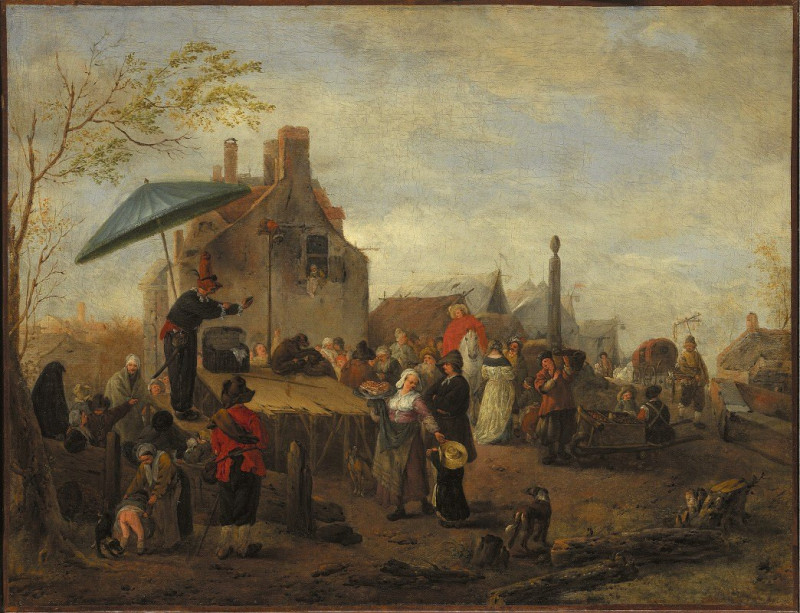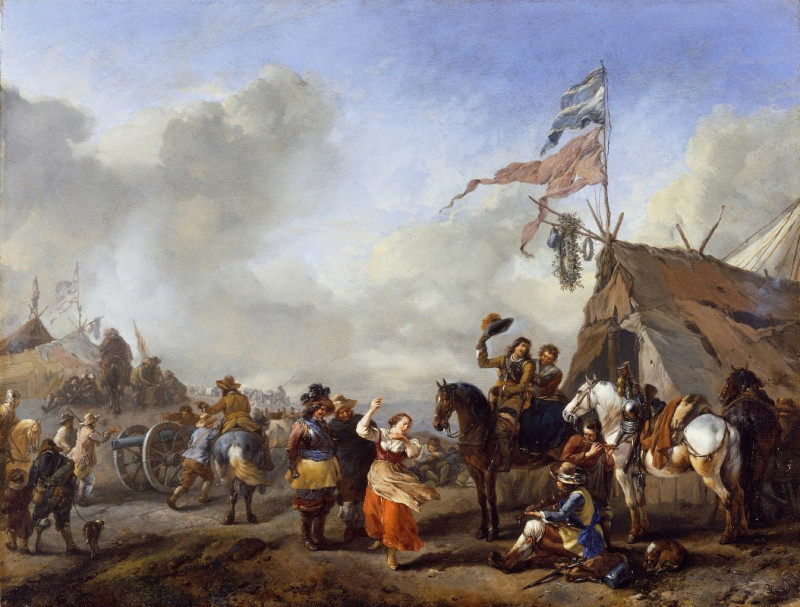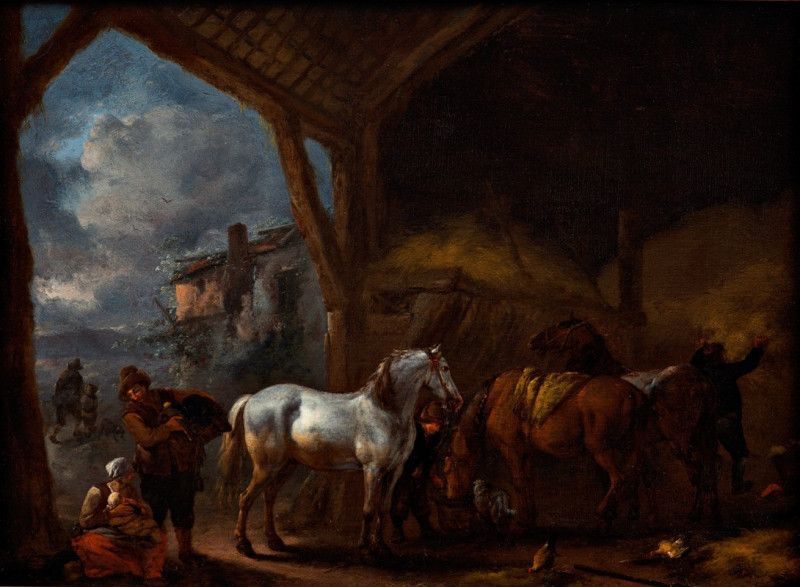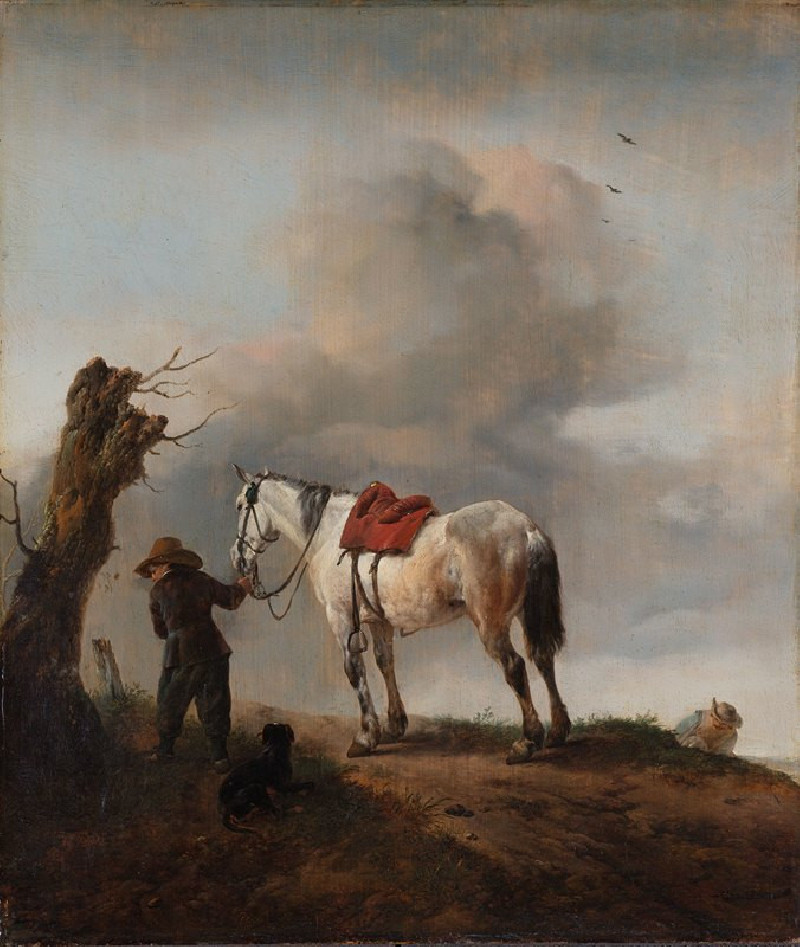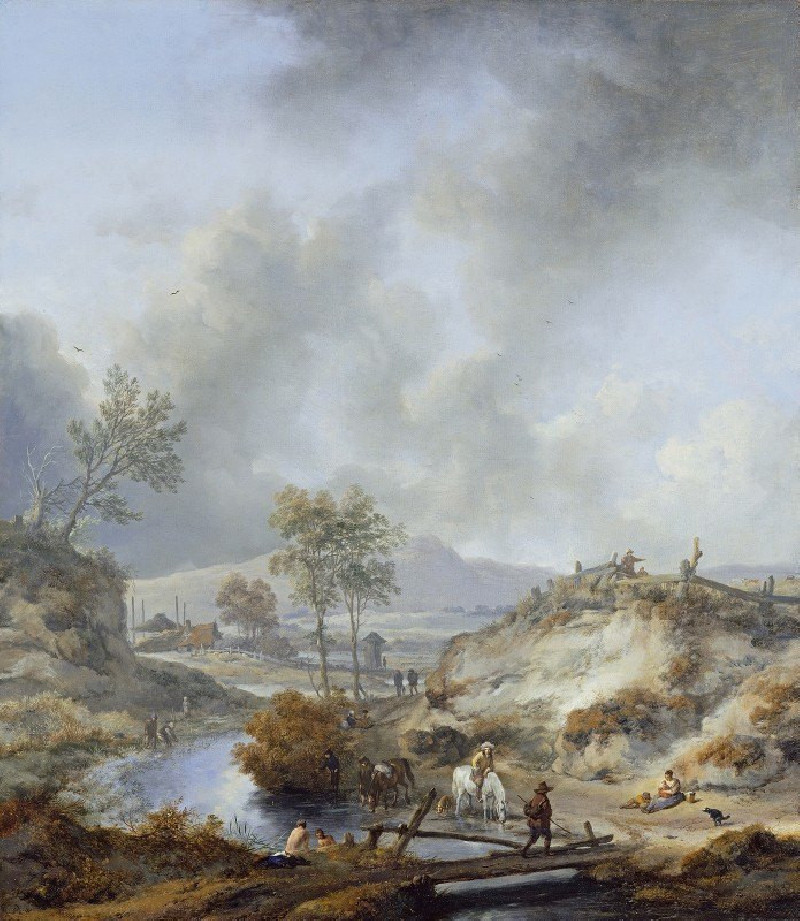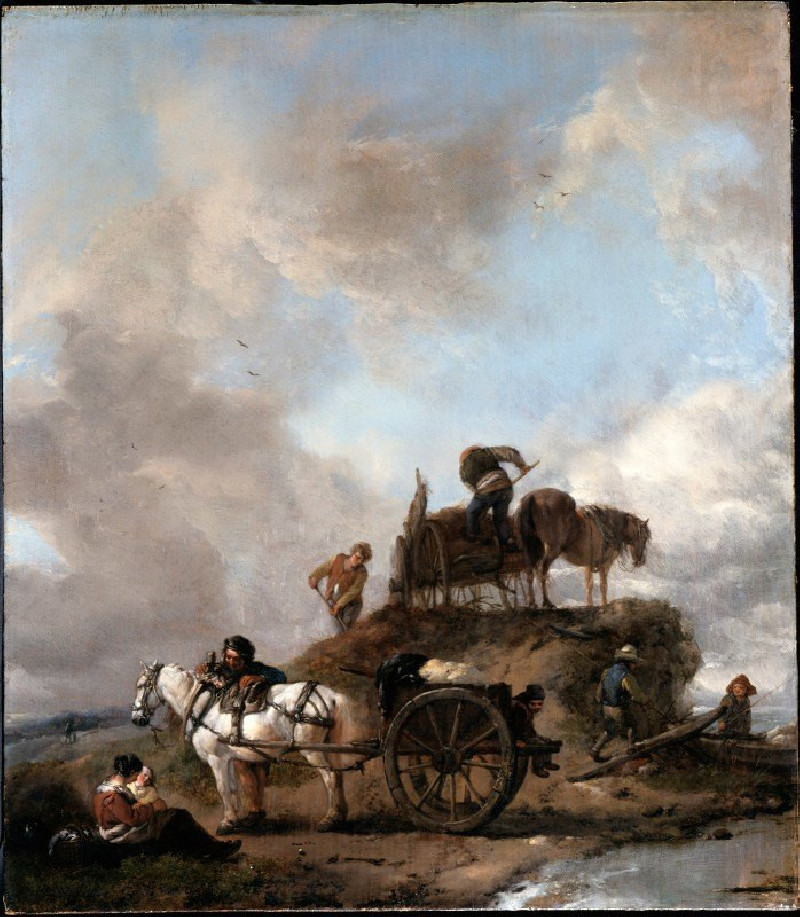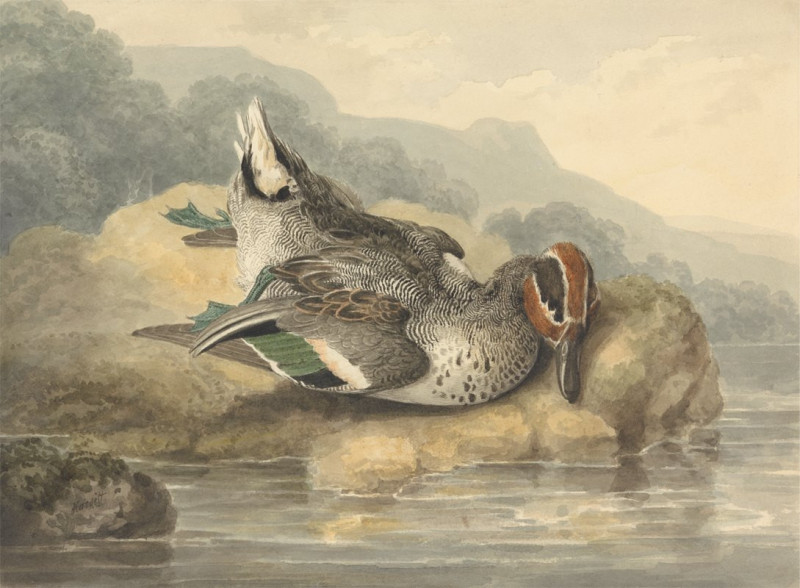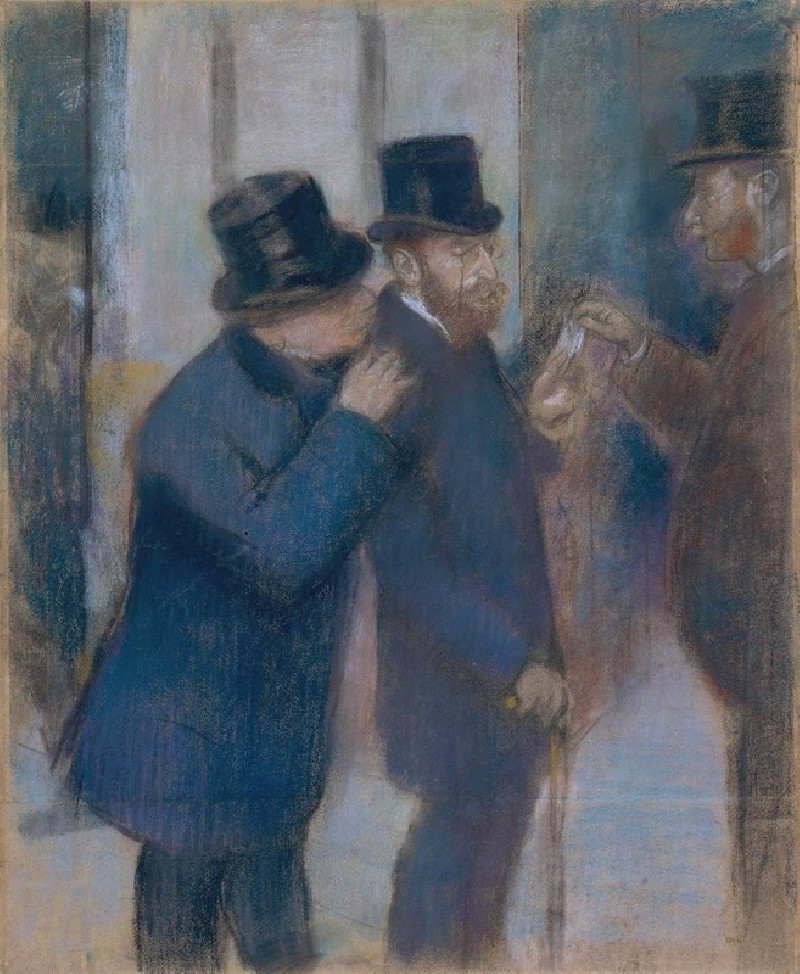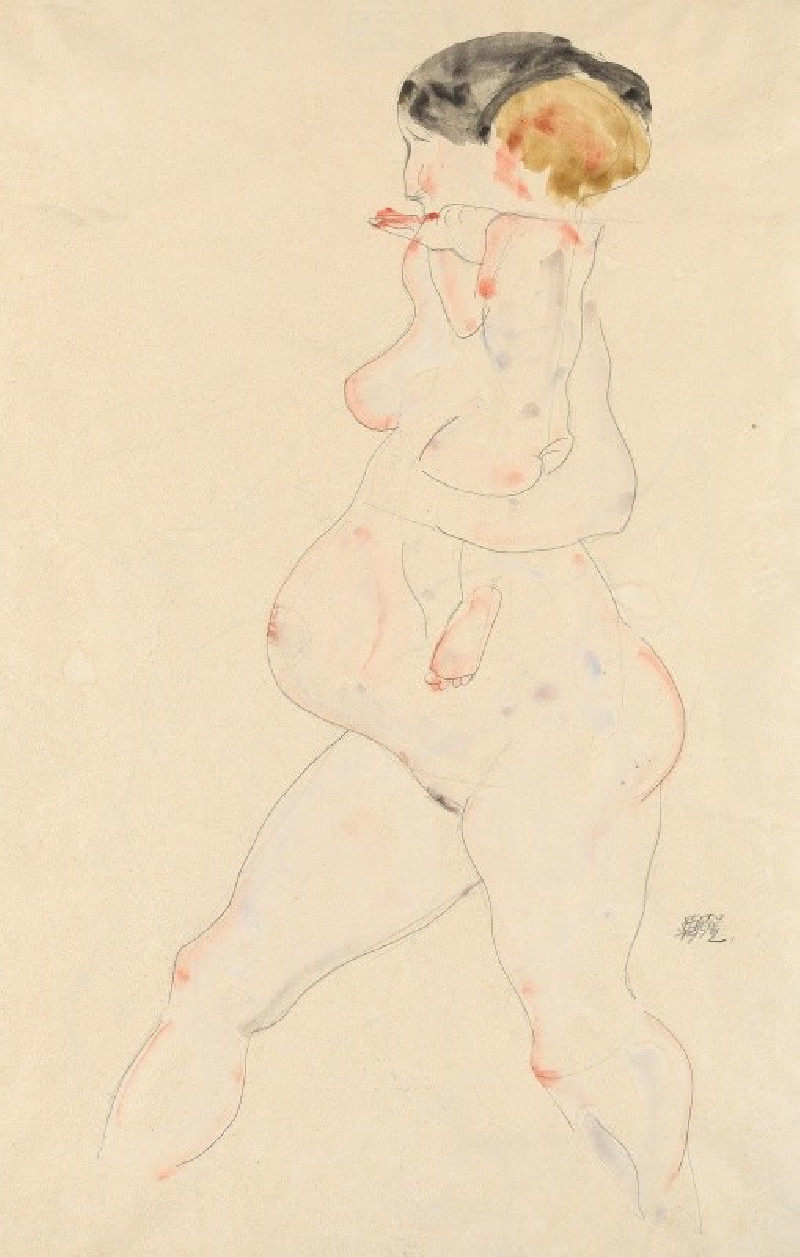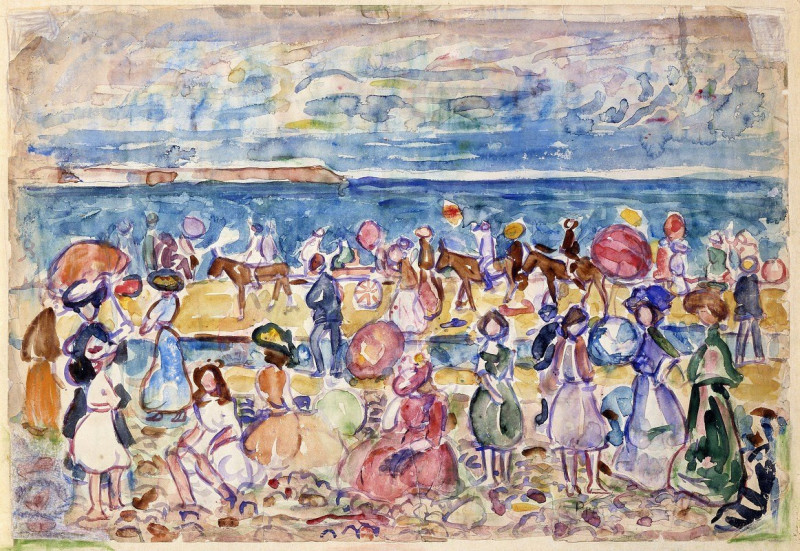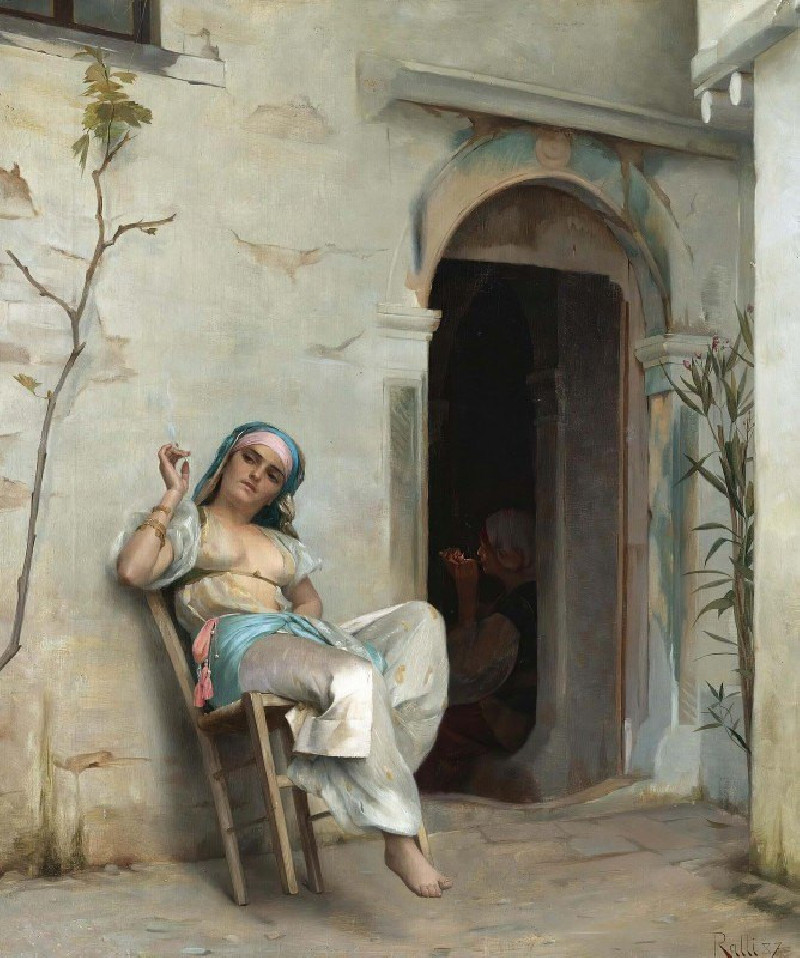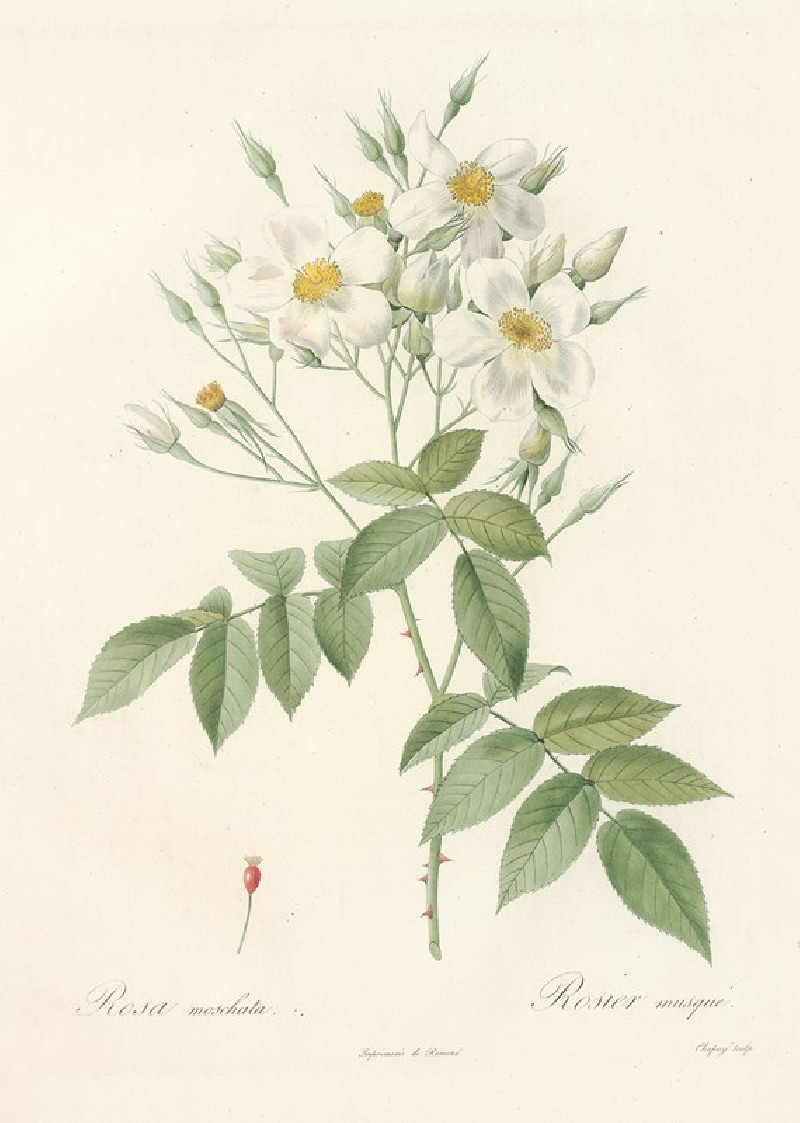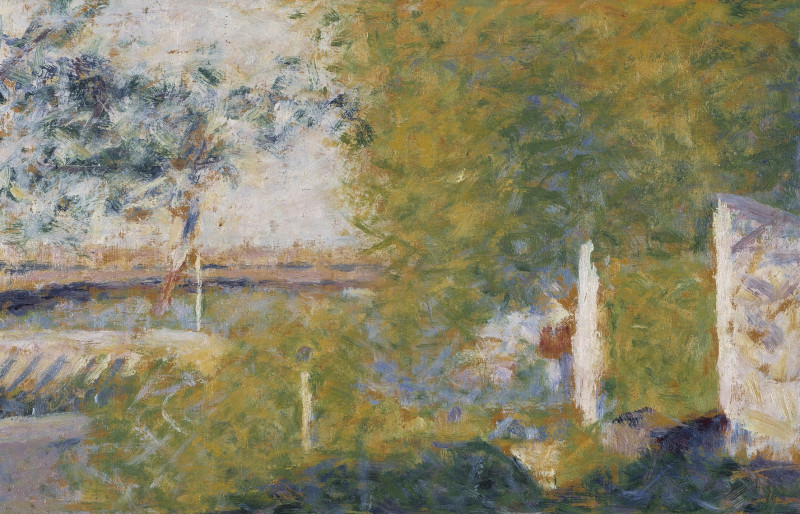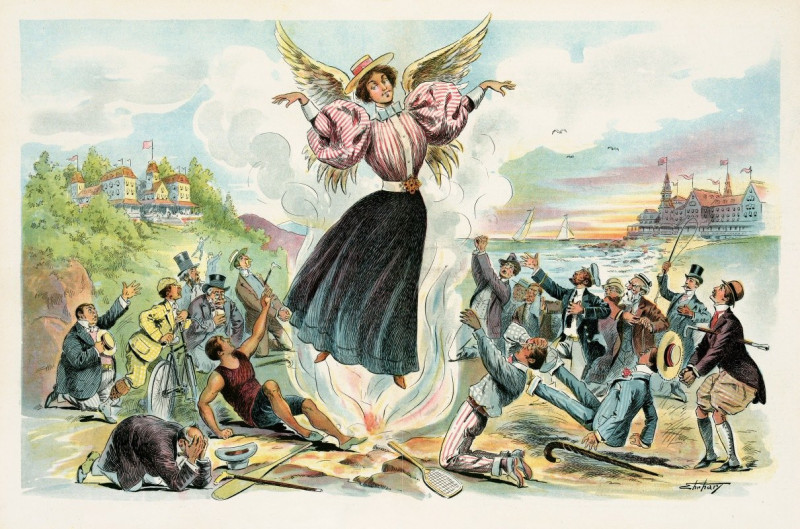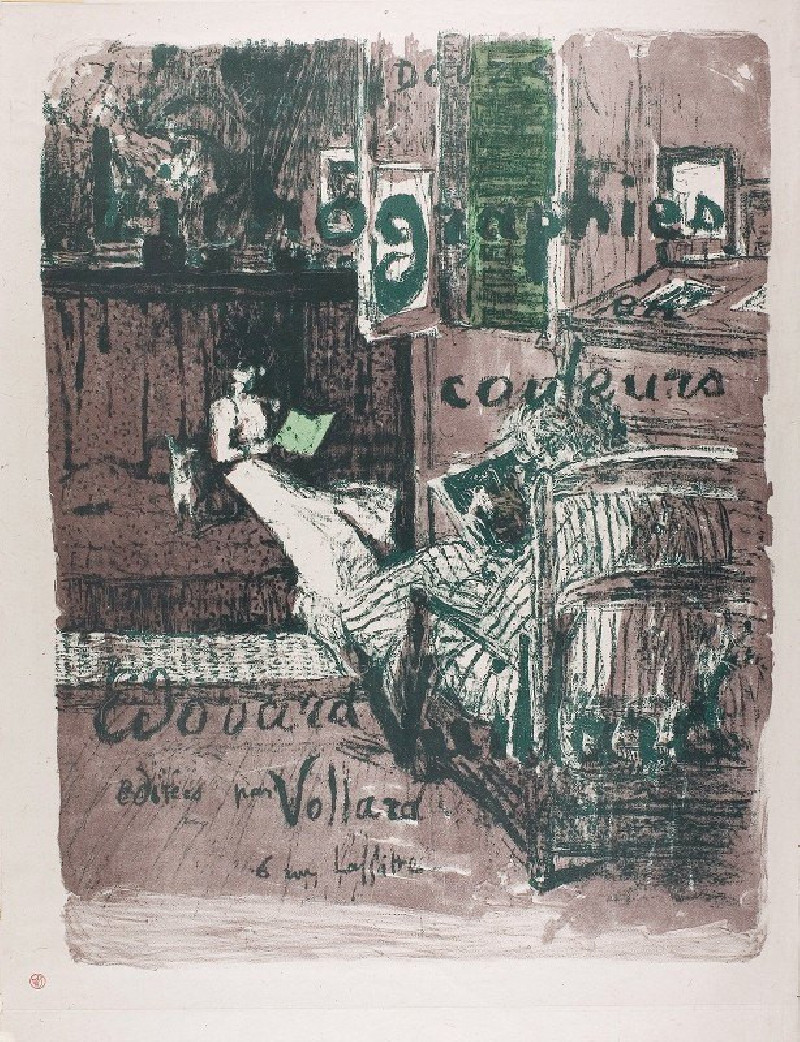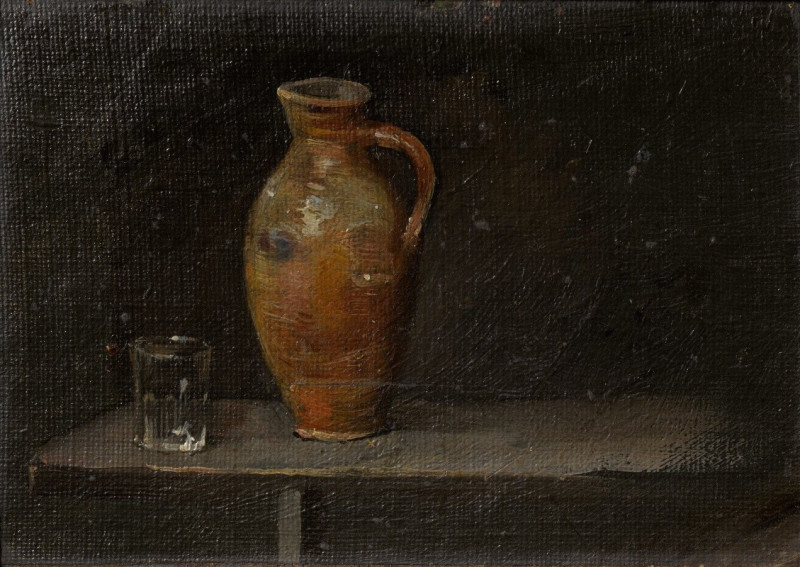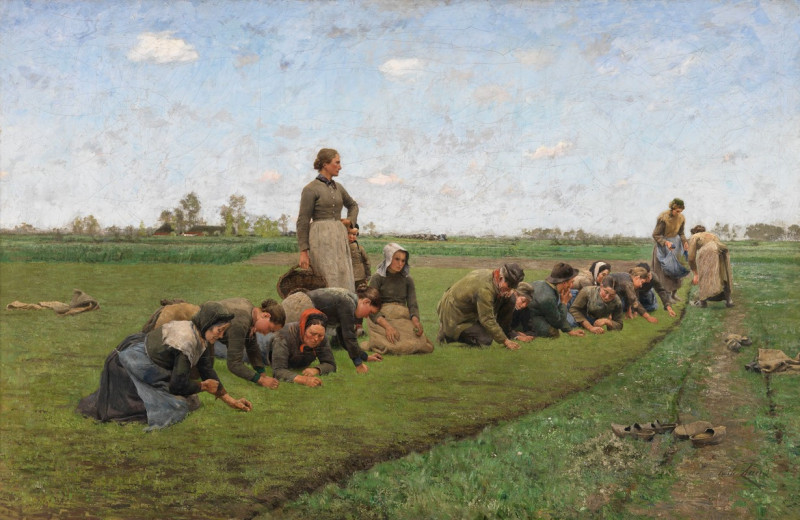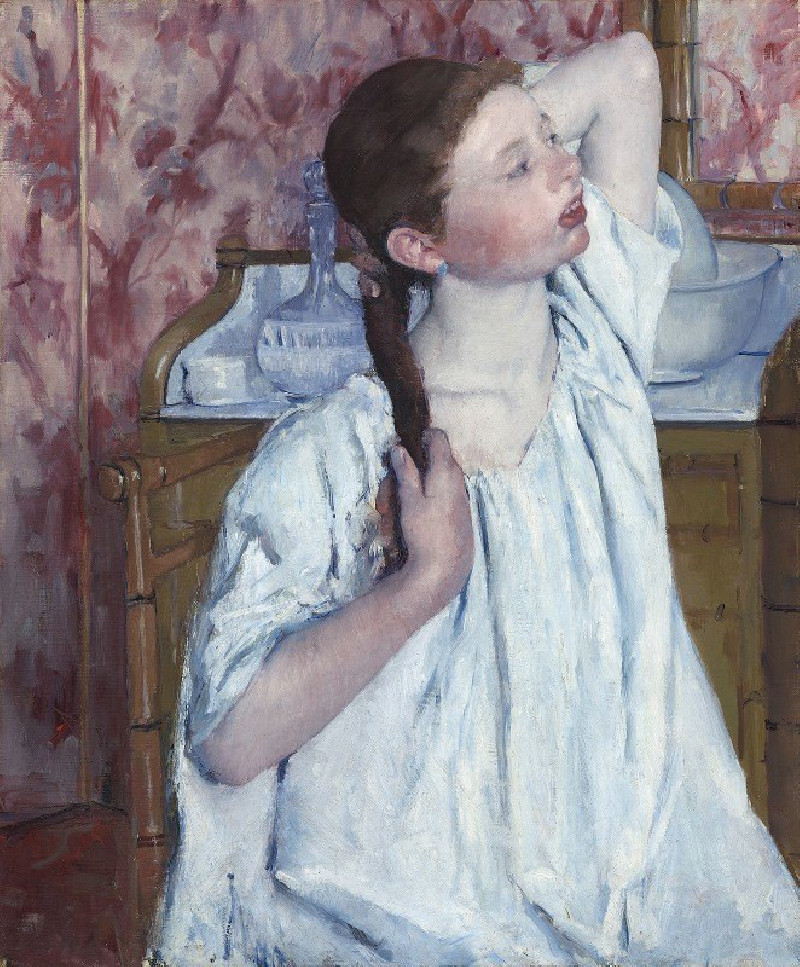An Army Camp (c. 1662 - c. 1664)
Technique: Giclée quality print
Recommended by our customers
More about this artwork
Philips Wouwerman, a celebrated Dutch artist known for his dynamic portrayals of horses and cavalry scenes, presents us with a captivating look into 17th-century military life in his painting "An Army Camp." Created between 1662 and 1664, this artwork offers a vivid glimpse into the day-to-day happenings within a military encampment.The scene is bustling with activity. At the forefront, a finely detailed white horse draws immediate attention, standing gracefully as a soldier prepares it for the day. Adjacent to this, the focal point shifts to a vibrant group of soldiers engaged in various forms of rest and recreation. Some appear in conversation, while others handle the logistics of camp life, showcasing the camaraderie and the routine of military personnel.The background of the painting subtly features tents and flags, giving a sense of place and the transient nature of army camps. The detailed depiction of the soldiers’ wears and the naturalism of the horses highlight Wouwerman's skill in capturing both the beauty and the grit of military existence.Adding to the atmospheric perspective of the painting, Wouwerman uses a muted palette to perhaps reflect the dusty, weary conditions of camp life, yet the scene is alive with movement and interaction, revealing the artist’s ability to animate static images with stories and emotions."An Army Camp" not only serves as a historical document but also as a testament to Wouwerman’s mastery in rendering lively equestrian scenes and human interest through his unique lens.
Delivery
Returns
Philips Wouwerman (also Wouwermans) was a Dutch painter of hunting, landscape and battle scenes.
Philips Wouwerman was one of the most versatile and prolific artists of the Dutch Golden Age. Embedded in the artistic environment and tradition of his home town of Haarlem, Wouwerman made an important and highly influential contribution to the canon of seventeenth-century Dutch painting.

